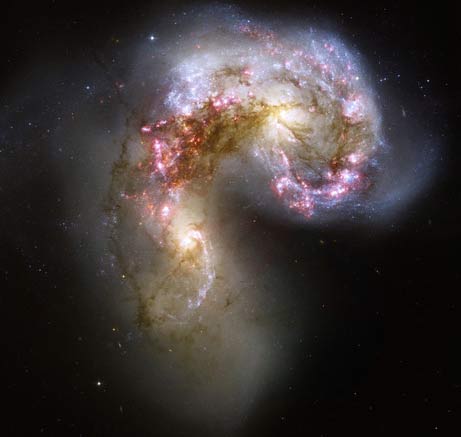New discovery about galaxy formation
The Spitzer telescope of the US Aerospace Agency (NASA) has captured rare images of two entangled galaxies to form a new galaxy.
Andromeda, 2 million light years from our galaxy, collided with the galaxy Messier 32 210 million years ago. To reconstruct the effects of the impact, the researchers built models on the computer. The results show that Messier 32 has crashed into Andromena's axis since the dinosaurs reigned on Earth. Messier 32 lost more than half of its real mass while a giant part of Andromena was broken.
G.Fazio, a professor of astrophysics at Harvard University, judged that the images provided a completely new and clear view of the ever-changing nature of galaxies in the universe. Concerning the fate of our galaxy in the future, astronomers predict Andromeda will probably begin the process of combining with the galaxy at about 5-10 billion years until the picture into an elliptical galaxy.

Andromeda Galaxy (Photo: NASA)
TM
- Find the oldest cluster of galaxies
- Our Milky Way galaxy is old, there is not enough gas to create a new star
- New challenge to the hypothesis of galaxy formation
- The galaxy deforms 100 million light-years from Earth
- Discover the farthest star in the Milky Way
- Detecting spiral galaxies in the early universe
- The discovery of new super galaxies is 160,000 times brighter than the sun
- The giant galaxy is 12.5 billion light-years from Earth
- NASA successfully launched the space celestial probe
- New discovery about the formation of neutron stars
- Explore the mysterious undeveloped galaxy for 10 billion years
- Terzan 5: The 'fossil' remains of the Milky Way galaxy formation
 Van Allen's belt and evidence that the Apollo 11 mission to the Moon was myth
Van Allen's belt and evidence that the Apollo 11 mission to the Moon was myth The levels of civilization in the universe (Kardashev scale)
The levels of civilization in the universe (Kardashev scale) Today Mars, the sun and the Earth are aligned
Today Mars, the sun and the Earth are aligned The Amazon owner announced a secret plan to build a space base for thousands of people
The Amazon owner announced a secret plan to build a space base for thousands of people